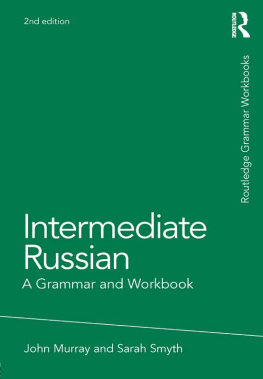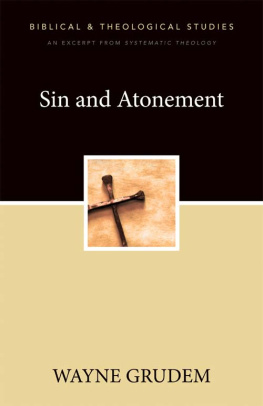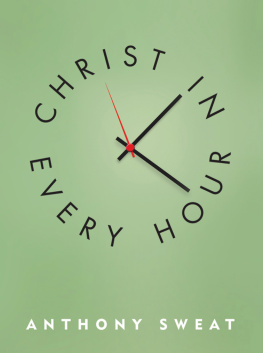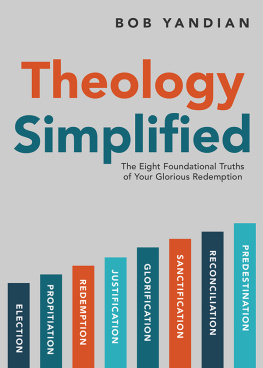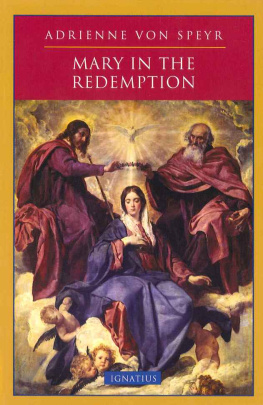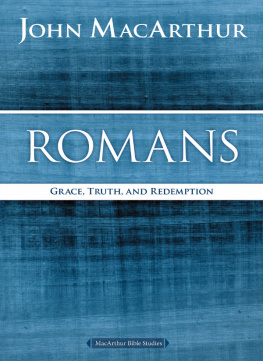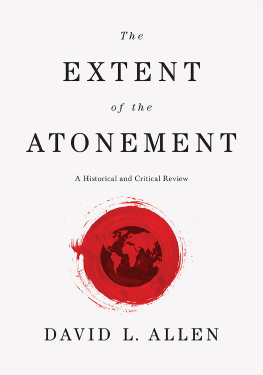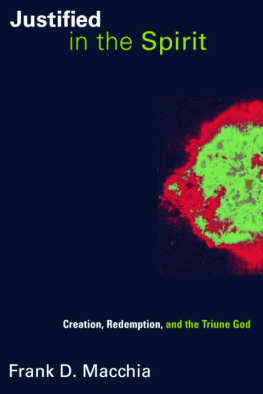REDEMPTION
Accomplished and Applied
John Murray
William B. Eerdmans Publishing Company
Grand Rapids, Michigan / Cambridge, U. K.
1955 Wm. B. Eerdmans Publishing Company
All rights reserved
This edition published 2015 by
Wm. B. Eerdmans Publishing Co.
2140 Oak Industrial Drive N.E., Grand Rapids, Michigan 49505 /
P.O. Box 163, Cambridge CB3 9PU U.K.
www.eerdmans.com
Printed in the United States of America
Library of Congress Cataloging-in-Publication Data
Murray, John, 1898-1975.
Redemption accomplished and applied / John Murray.
pages cm
Originally published: 1955.
Includes bibliographical references and indexes.
ISBN 978-0-8028-7309-5 (pbk.: alk. paper)
eISBN 978-1-4674-2122-5 (ePub)
eISBN 978-1-4674-0426-6 (Kindle)
1. Redemption. I. Title.
BT775.M8 2015
234.3 dc23
2015009844
Scriptures taken from the King James Version
T he accomplishment of redemption or, as it has frequently been called, the atonement, is central in our Christian faith. It is no wonder therefore that the Christian church should have in its possession a rich repertory of literature on this subject. It is with some misgiving that I have ventured to offer for publication the following attempt to deal with an aspect of the divine revelation that has been explored to such an extent. This present study cannot pretend to be in the same class as many of the superb contributions of both the more remote and the more recent past. I can only claim that I am presenting what has passed through the crucible of my own reflection. I am conscious of the profound debt I owe to numberless theologians and expositors. Acknowledgment in details would be impossible. Other men have labored and we have entered into their labors. However, there are certain facets of this great truth which I have sought to bring into clearer focus. Perhaps some neglected factors have received an emphasis which our present-day theological situation demands.
On so great a theme as Christs redemptive accomplishment I am profoundly conscious of the limitations that encompass our attempts at exposition. Thought and expression stagger in the presence of the spectacle that confronts us in the vicarious sin-bearing of the Lord of glory. Here we must realize that we are dealing with the mystery of godliness, and eternity will not reach the bottom of it nor exhaust its praise. Yet it is ours to proclaim it and continue the attempt to expound and defend its truth.
The material in Part II of this volume, dealing with the application of redemption, was written for The Presbyterian Guardian at the request of the editor, the Rev. Leslie W. Sloat, and was published in twenty-two articles from October 1952 to August 1954. I wish to express my indebtedness to The Presbyterian Guardian and to Mr. Sloat in particular for the courtesy of publication and for permission to reprint these articles in the present form. Any difference there may be in the mode of treatment between Part I and Part II of this volume is explained by the original purpose of what is comprised in the latter.
I wish to extend my gratitude to Miss Margaret S. Robinson for her services in preparing the typescript and to Miss T. E. N. Ozinga for preparing the indexes. Above all, I must thank the publishers, the Wm. B. Eerdmans Publishing Company, for undertaking this publication and for the many courtesies bestowed upon me in negotiations to that end.
I can only hope that the reader will find these studies consonant with the witness of Holy Scripture as the only infallible rule of faith and that by Gods grace what is accordant with Scripture will elicit the response of faith and conviction.
Philadelphia John Murray
May 24, 1955
Contents
A s a new convert to Christianity in the mid-1980s, I was always trying to find books that would help me engage more deeply with the faith. Because I had not grown up in a Christian home and had almost never attended church, my knowledge of the Bible and of its teaching was minimal. I knew something about God, something about sin, and something about Christ. Beyond that, I was a Cambridge undergraduate with less theological understanding than a ten-year-old who had been taught the catechism.
Because of this, I was always hunting for good, basic books on Christian doctrine. A kind local pastor gave me a copy of J. I. Packers Gods Words and that helped introduce me to the basic elements of evangelical theology. Then someone recommended I obtain a copy of John Murray, Redemption Accomplished and Applied . I had never heard of Murray and neither had the manager of the local Christian bookshop, but he dutifully ordered me a copy. When it arrived, I confess to a little disappointment. Frankly, I had expected a weightier tome, not a relatively brief paperback. Yet my disappointment did not survive even my reading of the very first chapter.
What Murray did, and what I had never really seen before, was demonstrate how my salvation connected to the work of God in both eternity, as he planned salvation, and time, as he executed it in the person and work of his Son and applied it to individuals through the work of his Holy Spirit. Thus, Murrays little book did three things of major importance: it showed how eternity and time relate to each other in salvation, how that salvation is a Trinitarian matter, rooted in the very identity of God as Trinity, and how this makes sense of the whole Bible.
Of course, Murray was not really doing anything exceptional. What he did was build upon a rich tradition of thinking in the Reformed churches, which placed each of these three points in the foundation of their testimony. As a minister in my own denomination, the Orthodox Presbyterian Church, and as a key faculty member in the early days of Westminster Theological Seminary, Murray loved the Westminster Standards and the theology which they teach. What he sought to do was to explicate that theology, particularly as it relates to salvation.
More specifically, Murray was seeking to articulate the order of salvation (Latin: ordo salutis ) in a manner that also connected it to the history of salvation (Latin: historia salutis ). We might distinguish the two by saying that the order of salvation pertains to the way in which the individual appropriates salvation. Election, calling, justification, sanctification, and glorification are the basic elements of this. The history of salvation is focused on the acts of God in history, specifically as they culminate in the work of the Lord Jesus Christ, which provide the basis for the order of salvation.
Thus the work begins with a careful analysis of the nature of the atonement. This is history of salvation territory. Christs incarnation and death must be understood against the backdrop of Gods love in eternity for those he has chosen to rescue from their sin and its eternal consequences. Then the cross itself must be understood in terms of Gods wrath against sin, of his imputation of our sin to Christ, and of the Old Testament sacrificial system of which it is the fulfillment. Murrays view is profoundly particularist, whereby Christs death is not for everyone but for those whom God has chosen.
Then, in the second half of the work, Murray looks at the implications of Christs death for the salvation of the individual believer, addressing the various elements of the order of salvation. What emerges is a seamless move from eternity to time, and from the work of God in Christ to the work of God in the believer.
Murrays book has its critics. His view of particular redemption is repudiated by those opposed to what they call limited atonement, who see it as restricting Gods love and standing at odds with passages in the New Testament which apparently speak of the universality of Gods desire for all to be saved. Others within the Reformed camp itself have taken issue with Murray, or at least with certain traditions of reading Murray, for what they see as a failure to distinguish clearly between justification and sanctification.


